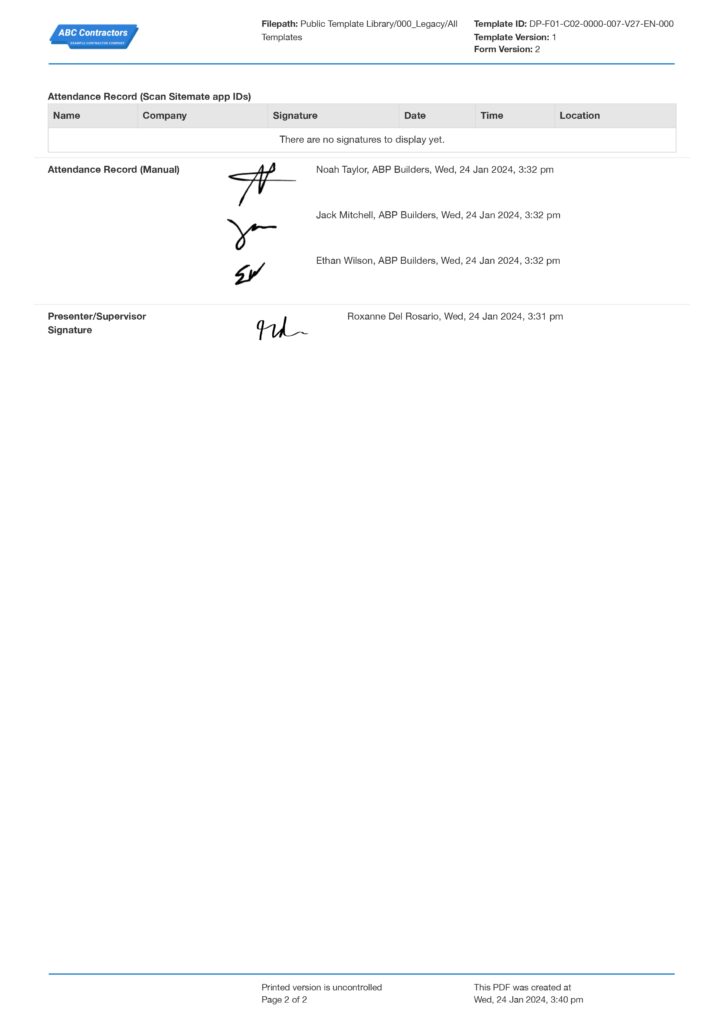Dashpivot Article – Winter Driving Safety Tips for Employees
Winter Driving Safety Tips For Employees
Share these winter driving safety tips to your employees, so they can stay safe on icy roads, handle bad weather, and avoid accidents.

The Importance of Winter Driving Safety Tips for Employees
Driving during the winter months brings a host of challenges that can significantly impact employee safety, particularly in workplaces where there are extensive outdoor work activities. The presence of ice, snow, and reduced visibility increases the risk of accidents, which can have severe consequences for employee safety and productivity. It is imperative from employers to provide winter driving safety tips for employees in order to ensure they are well-equipped to handle the hazards of the season.
Winter driving is often necessary work settings where timely and safe transportation is crucial to meeting project deadlines and maintaining workplace productivity. However, driving in winter conditions bears inherent safety risks. Safety incidents due to winter driving can jeopardise the health and safety of employees and also result in costly delays and financial losses. By empowering employees with knowledge and strategies for safe winter driving, organisations can safeguard their workforce and secure their operations against unpredictable winter conditions.
Common Winter Driving Hazards
Winter driving comes with a set of inherent hazards that can significantly increase the risk of accidents and impact safety. Awareness and preparation are key to navigating these conditions safely. Here are some common winter driving hazards:
Ice on Roads: Slick ice patches, especially black ice, can make roads treacherous, reducing vehicle traction and increasing stopping distances.
Snow Accumulation: Heavy snowfall can obscure road markings, reduce visibility, and make it difficult to maintain control of the vehicle.
Reduced Visibility: Snow flurries, fog, and shorter daylight hours in winter can drastically reduce visibility, making it harder to see other vehicles, pedestrians, and road hazards.
Slushy Roads: Wet, slushy conditions can lead to hydroplaning, where tires lose contact with the road surface, leading to loss of control.
Freezing Temperatures: Cold weather can affect vehicle performance, including battery power, tire pressure, and fluid viscosity, potentially leading to breakdowns.
Wind: Strong winter winds can unsettle vehicles, especially on open roads or bridges, and contribute to drifting snow that obscures roadways.
Snow Banks: High snow banks at intersections can obstruct drivers’ views, making it difficult to see oncoming traffic or pedestrians.
Icy Bridges: Bridges and overpasses tend to freeze before other parts of the road, creating unexpected slippery spots.
Winter Sun Glare: Low-lying winter sun can cause significant glare, impairing vision even during clear days.
Cold Weather Affecting Vehicle Performance: Lower temperatures can lead to decreased battery power, thickening of fluids, and reduced tire pressure, all of which impact vehicle performance.
Top Winter Driving Safety Tips for Employees
Maintaining safety during winter conditions requires diligence and preparation, especially when operating heavy vehicles or transporting sensitive materials. Here is a list of the top winter driving safety tips for your employees:
Comprehensive Pre-Trip Inspections
Before each trip, conduct thorough checks of your vehicle. Ensure that the brakes are responsive, tires are inflated to the correct pressure and have sufficient tread, lights are fully functional, batteries are charged, and wiper blades are effective. It's crucial that heaters and defrosters work efficiently to maintain visibility.
Increased Following Distance
On icy or snowy roads, stopping distances can be up to ten times longer than on dry roads. Adjust your following distance accordingly to ensure you have ample time to stop safely without risking a collision.
Adjusted Speed for Conditions
Modulate your speed to align with the road conditions. Even roads that appear clear can harbor dangerous patches of ice, particularly in shaded or secluded areas. Slower speeds allow for safer maneuvering and stopping.
Specialised Winter Tires
Equip your vehicle with winter tires that are designed to offer superior traction, braking, and handling in cold, snowy, or icy conditions. Winter tires are made from a softer rubber compound that remains flexible in cold temperatures, providing a better grip on the road.
Smooth Driving Techniques
Apply brakes gently and steer smoothly to avoid skids. In the event of a skid, calmly steer in the direction you want to go to regain control of the vehicle.
Proactive Route Planning
Check the latest weather forecasts and road conditions before embarking on your journey. If severe weather is expected, plan your route to avoid the most affected areas and allow extra travel time.
Emergency Preparedness Kit
Equip your vehicle with essential items including a sturdy snow brush, an ice scraper, jumper cables, a bag of sand or kitty litter (for added traction if stuck), warm blankets, a reliable flashlight, and sufficient water and snacks in case of delays or emergencies.
Visibility Enhancement
Use your vehicle’s lights during the day to increase your visibility to other drivers. This is particularly important during heavy snowfall or fog.
Trip Necessity Evaluation
Assess the importance of your journey when faced with extreme weather conditions. If the trip isn't critical, consider postponing it until the weather improves to ensure your safety.
Vehicle Handling Familiarity
Spend time getting to know how your specific vehicle responds to winter conditions, especially if it's a larger or specialised vehicle. Practice in a safe, open area to become accustomed to the vehicle's handling on slippery surfaces.
Emergency Protocol
In the event that you get stuck or experience a vehicle breakdown, stay with your vehicle and signal for help using emergency flashers or markers. Remain calm, conserve energy, and wait for rescue services.
Communicating Winter Driving Tips for Employees to Your Team
Now that you are aware of the best winter driving safety tips for employees, you should ensure that these tips are effectively communicated to your team. Below are some strategies for educating team members on best practices for winter driving:
Interactive Training Sessions
Conduct engaging training sessions that involve both theoretical knowledge and practical exercises related to winter driving safety. Use multimedia presentations to demonstrate proper vehicle handling techniques in icy or snowy conditions and simulate decision-making scenarios drivers may face. Interactive elements, such as group discussions and hands-on demonstrations with vehicle safety equipment, can enhance understanding and retention of the safety principles.
Safety Posters and Flyers
Create visually distinct posters and flyers that succinctly convey critical winter driving tips, such as the importance of maintaining proper tire pressure, the steps for de-icing windshields effectively, and the procedure for checking vehicle lighting and batteries. Employing clear, concise language and effective graphics can capture attention and reinforce safety messages in high-traffic areas of the workplace.
Toolbox Talk on Winter Driving Safety
To conduct a compelling toolbox talk, plan a short, focused discussion that targets key aspects of winter driving safety. Start with a brief introduction on why winter driving safety is crucial, especially highlighting recent incidents or near misses as cautionary examples.
Distribute handouts or show short clips that illustrate correct practices, such as how to brake safely on ice or how to pack and use an emergency kit. Encourage participants to share their experiences and strategies for staying safe, facilitating a collaborative learning environment. Conclude by summarising the main points and distributing quick reference cards or checklists that employees can keep in their vehicles.
Peer-to-Peer Coaching
Pair experienced drivers with less experienced ones for mentorship on winter driving techniques. This can include practical sessions where experienced employees demonstrate pre-trip inspections, vehicle handling tips on slippery surfaces, and how to effectively use safety features like anti-lock braking systems (ABS).
Digital Resources
If your organisation routinely requires many employees to drive in cold climates, it may be worthwhile developing a comprehensive digital learning module to ensure that everyone has access to vital safety training. This module could include instructional videos demonstrating vehicle preparation for winter, animated diagrams showing how to react during skidding, and interactive quizzes to test knowledge on winter driving safety. Regularly update these resources to cover emerging risks and safety innovations.
Follow-Up Assessments
Implement detailed follow-up assessments to measure the effectiveness of the safety training provided. This could involve scenario-based evaluations where employees are asked to respond to hypothetical winter driving situations, practical vehicle readiness checks, or direct observation of driving practices. Use the results to identify areas for improvement and customise future training to address specific needs or gaps in knowledge.
Ensure that you document any strategies that you implement. If winter driving is routine work activity in your organisation, you will need to review and refine these strategies in the future, and working from an existing document is more efficient than starting from scratch.
Here is an example of a toolbox talk on winter driving that has been recorded using a specialised toolbox talk form:

Use this form to share proven winter driving safety tips with your employees
Educate your team on winter driving safety tips with free and customisable toolbox talk forms
Toolbox talks are a fast an effective means of delivering winter driving safety tips to employees. If winter driving is a routine work activity, you will have to hold more talks about it in the future. You should use this toolbox talk winter driving template for your next toolbox talk, so that you can record and re-use the information when it becomes relevant again.
The form comes with all the necessary fields to hold an effective meeting about winter driving. You can record down all your meeting discussion points about winter driving hazards, preparation procedures, and advice on how to drive on icy or snowy roads. You can also note down issues raised by team members, assign action items, and record your meeting attendance.

Truck Driver Pre Trip Inspection Checklist template
Improve how your truck drivers submit and manage their pre trip inspections to improve driver safety and truck maintenance.

Truck Driver Safety Checklist template
Make your truck driver safety checklists more accessible and more compliant using a digital template.

Safe Work Method Statement for Driving/Transportation template
Ensure your workers and projects are referencing a good safe work method statement when driving - not bad habits.

